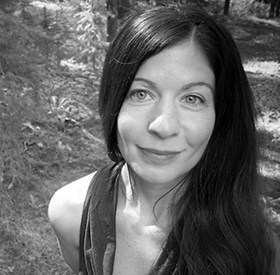Origin Story
“What is dying is the willingness to be in denial.”
—angel Kyodo williams
The heron flew away
and I wanted to tell someone
how long it stayed,
how close I got,
how much I missed it
even as it stood
to watch me,
large-eyed animal
that I am, terrible
at believing what I can’t see.
You see fire in the home
where we live: the world
in cardiac arrest.
A heart attack
is not the onset I want to say
to someone, it’s the flare.
It illuminates what’s already here:
the forests
illuminated, the earth
lit as an origin story.
Here you are,
I say instead,
aloud, surprised
at how close
I’ve been holding you
in the dark.
Flame yields
no new landscape.
It bares the contours
like a map
so we can see
where we’ve been all along,
can see one another
as we walk, and say,
for once, nothing
at the fire’s steady flight,
like a heron
lifting in loud beats,
our silent mouths open
as if to give it a tunnel.
Copyright © 2021 by Leah Naomi Green. Originally published in Poem-a-Day on May 1, 2021, by the Academy of American Poets.
“This poem was written during the summer of 2020—a season of wildfires and global BLM protests—as deep problems were becoming visible to many in power. For the speaker of this poem, flames make visible a world beyond their own speech, revealing that the abstract ‘someone’ they have been wanting to tell about their love and fear for the world is, in fact, a very real ‘you’ with whom that world is shared, and with whom, therefore, they are already in reciprocal relationship. It is attentiveness to the world beyond themselves that helps the speaker to say ‘for once, nothing,’ but instead to open their mouth in awe and let the world enter them. This poem is ultimately hopeful that the light of destruction is also the light of origin, by which we might see and reorient to the world beyond our own speech.‘Origin Story’ owes gratitude to Rosalie Bull.”
—Leah Naomi Green
Judges’ Citation by Camille T. Dungy and Dr. Katharine K. Wilkinson
“The second stanza of ‘Origin Story’ won't let us off the hook, reminding readers what is really at stake and what all this means, but at the same time, the poem rests in beauty and wonder and love and hope, teaching us to look, and look again.”

